When looking at old post cards of Saigon during the French period, there are many Malabar (the old word for people from Coastal South India) around Vietnam (especially Saigon). If you look around today, you may not ever find a single Saigonese Malabar. What happened to them?
There are Indians from India who have come to Vietnam since the Đổi Mới reforms of 1986, but do not have the same history as the Saigon Malabar. These Indians are in Vietnam to make money and weren’t born in Vietnam, not to mention having the 100+ year history.
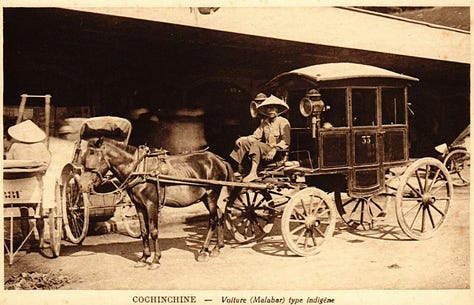
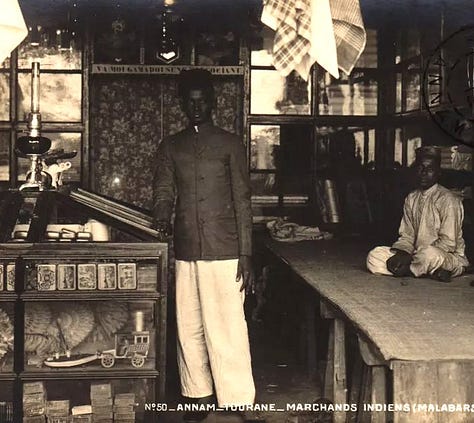
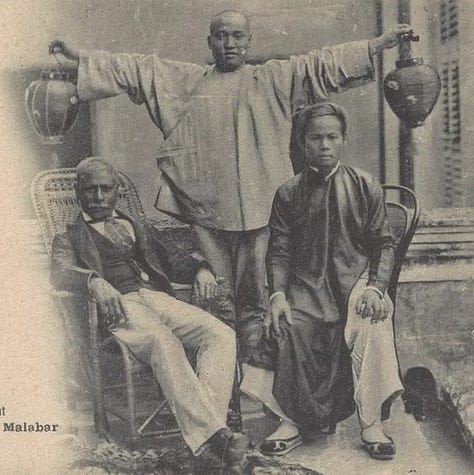
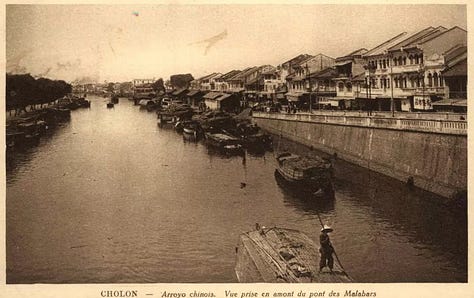
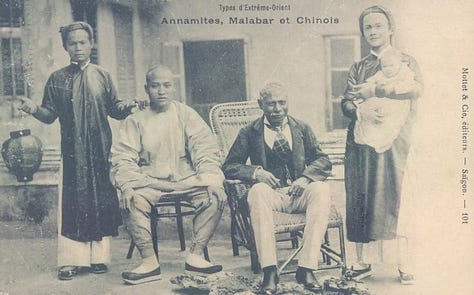
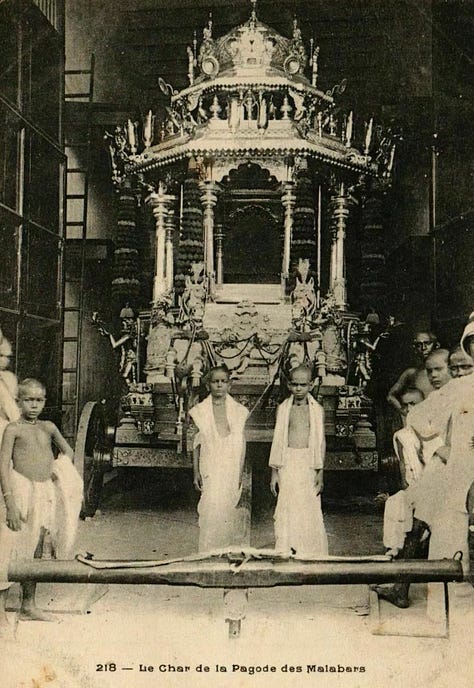
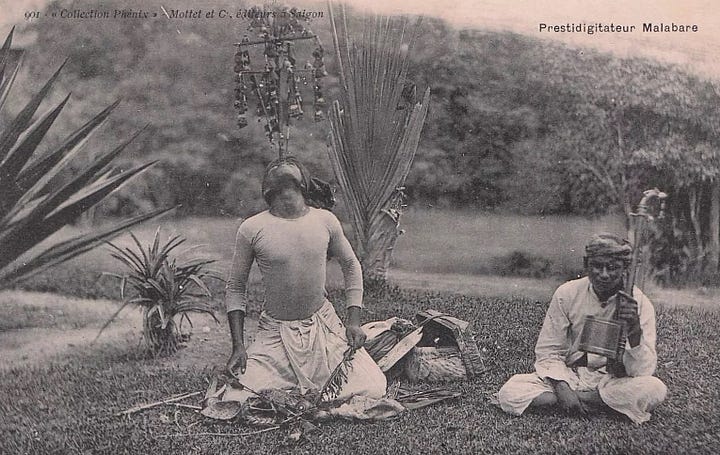
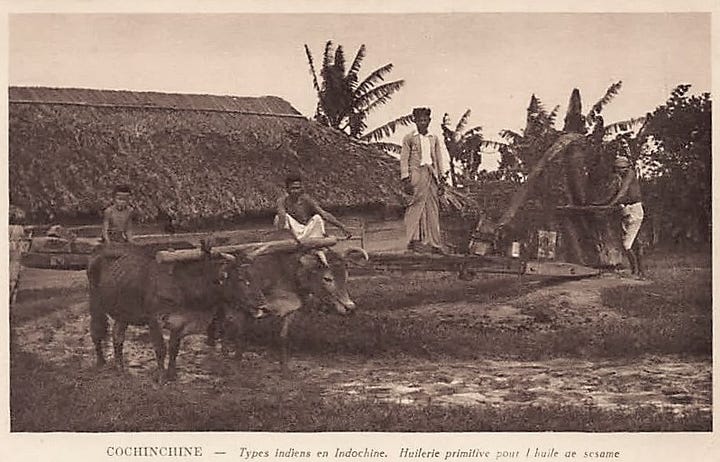
The Malabar were in control of the Malabar taxi business (the old time horse drawn carriages) and mostly monopolized the money changing business in cities all over French Colonial Vietnam. Most of them originated in French India, on the eastern coast of India. According to Wikipedia, at one time, in a 1937 census, there were 3,000 Malabar in Vietnam, before 1975, there were around 3,000 to 4,000 Malabar living in Saigon when the population of Saigon was only around 2 million. As of today, there are only around 1,000 surviving Saigonese Malabar with Hồ Chí Minh cities population of nearly 10 million.
When they disappeared, the Malabar left their cultural relics behind with several temples, mosques and even a cemetery.
There were three Hindu temples in Saigon (District 1) and there was an annual religious procession every year where the main deities from each temple were placed on a palanquin and carried around Saigon for the Thaipusam festival. The temples are Sri Mariamman Temple at 45D Trương Định, Sri Thendayutthapani Temple at 66 Tôn Thất Thiệp (formerly Rue Malabar) and Subramaniam Swamy Temple at 98 Nam Kỳ Khởi Nghĩa.
There is a Muslim Mosque built in 1935 in district 1 called Jamia Al Muslim (Dong Du Mosque) at 66 Đường Đông Du. There is Cho Lon Mosque at 641 Nguyễn Trãi, Ward 11, District 5. There is an Indian Muslim cemetery at 360 Cách Mạng Tháng Tám, District 1, which dates back to the 1930’s, although no burials have been allowed there since 1984. I have seen a mosque in district 5, (but I do not remember the address) and am told there were several other Indian Muslim Mosques around Chợ Lớn.
According to Wikipedia, there are approximately 70,000 Hindus still living in Vietnam, but most of these are the remaining Chàm people of central to southern Vietnam and do not have a Southern Indian appearance or even direct South Indian ancestry, but instead come from the Chàm maritime empire originating in Malaysia.
According to Wikipedia:
After the Fall of Saigon, also known as the Liberation of Saigon or Liberation of the South, the Communist regime confiscated and collectivized all private property in the South for little to no compensation, as it had done in the North since 1945. This included the confiscation of Indian-owned private properties such as homes, businesses and places of worship. The former South's free market economy was ended, as a result of the state-run economy. Foreigners were unwelcome and harassed. The Indian-Vietnamese fearing further persecution exited Vietnam, depleting the pre-1975 Indian-Vietnamese presence. The pre-1975 Indian-Vietnamese are few in number today.
Unfortunately, this is a common story after a regime change, with several other Vietnamese ethnic groups claiming similar hardships, with many ethnic people of Indian, Chinese, Chàm, etcetera decent taking their liquid life savings and hopping into a rickety refugee ship going toward any country who would have them. Many were able to claim refugee status and move to Western countries in Europe or in the United States. Some found lives in new countries. We don’t know where they ended up, but we do know they have all scattered and their heritage is disappearing. The only thing that remains are some old postcards and the buildings they left behind.



Very interesting topic, good stuff. There are some other remnants, although small, for example with food, there's a Vietnamese curry, you may have heard of ông chà và? Chà Và was apparently used originally to refer to people from Java (Indonesia) and eventually becoming a catch-all term for anyone with dark skin from Asia, even Filipinos were thrown into that group. To this day, there's still Chà Và Bridge (although rebuilt a number of times) in D8 where much of the Malabar population you refer to in your post lived and traded (there are a few buildings from the era just hanging in there). And how about bánh xèo...don't you think it looks a lot like dosa? Then there's bánh khọt, bánh căn, and bánh bò (the version that looks like a Sri Lankan hopper), which all have versions in Indian cuisine and can be found throughout the south. Fascinating stuff!
He interesting, it surprises me as much as I found out that the Portuguese had history with India